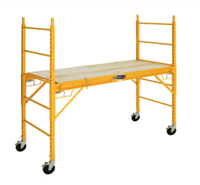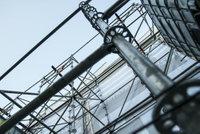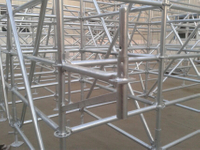Content Menu
● Introduction to 48.3 mm Galvanized Pressed Scaffolding Coupler
● Material Properties and Galvanization
>> Pressed Steel Construction
>> Galvanized Coating
● Performance in Harsh Weather Conditions
>> Rain and High Humidity
>> Snow and Ice
>> Salt Air and Coastal Environments
>> Extreme Temperatures
>> Wind and Mechanical Stress
● Types and Applications
>> Common Types of 48.3 mm Galvanized Pressed Couplers
>> Industry Applications
● Installation and Safety Guidelines
>> Installation Steps
>> Safety Best Practices
● Maintenance and Longevity
>> Routine Maintenance
>> Expected Service Life
● Advanced Usage and Case Studies
>> Advanced Usage in Extreme Environments
>> Case Study: Coastal Bridge Construction
>> Case Study: Cold Climate High-Rise
● Environmental Impact and Sustainability
>> Recyclability and Environmental Benefits
>> Sustainable Usage Practices
● Conclusion
● FAQ
>> 1. Can 48.3 mm galvanized pressed scaffolding couplers be used in coastal or marine environments?
>> 2. How often should galvanized pressed couplers be inspected in harsh weather?
>> 3. What is the difference between pressed and drop-forged couplers for harsh weather?
>> 4. Does galvanization wear off over time, and what should I do if it does?
>> 5. Are 48.3 mm galvanized pressed couplers compatible with all scaffold tube brands?
Scaffolding safety and durability are critical in construction, especially when projects face harsh environmental conditions. The 48.3 mm galvanized pressed scaffolding coupler is a widely used component, prized for its strength, versatility, and corrosion resistance. But how well does it perform in rain, snow, high humidity, or extreme temperatures? This comprehensive guide explores whether 48.3 mm galvanized pressed couplers are suitable for harsh weather, how they are engineered for resilience, and best practices for their use and maintenance.
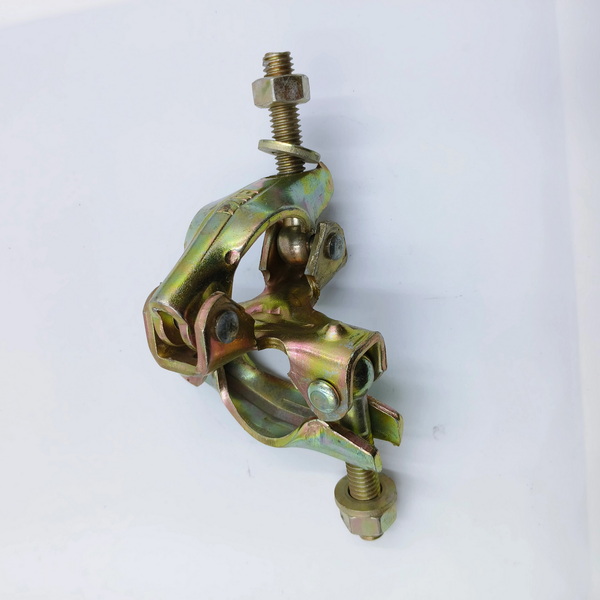
Introduction to 48.3 mm Galvanized Pressed Scaffolding Coupler
The 48.3 mm galvanized pressed scaffolding coupler is a steel fitting designed to securely connect scaffold tubes of 48.3 mm diameter. Its pressed steel body, typically made from Q235 or similar high-strength steel, is finished with a protective galvanized coating. This combination enables the coupler to withstand substantial loads and environmental stressors, making it a staple in global construction projects.
Material Properties and Galvanization
Pressed Steel Construction
- Strength: Pressed couplers are manufactured from robust steel plates (often Q235), which are stamped and formed to precise shapes. This ensures high load-bearing capacity and resistance to deformation under stress.
- Lightweight: Pressed couplers are lighter than drop-forged alternatives, making handling and installation easier without compromising safety.
Galvanized Coating
- Corrosion Resistance: Galvanization involves coating the steel with a layer of zinc, which acts as a barrier against moisture, oxygen, and corrosive agents.
- Types of Galvanization:
- Hot-dip galvanizing: The coupler is submerged in molten zinc, creating a thick, durable coating.
- Electro-galvanizing: A thinner zinc layer is applied via electrochemical processes, suitable for moderate environments.
- Durability: Galvanized pressed couplers are highly resistant to rust, even when exposed to rain, snow, or high humidity.
Performance in Harsh Weather Conditions
Rain and High Humidity
The zinc coating on a 48.3 mm galvanized pressed scaffolding coupler prevents water from reaching the steel, drastically reducing the risk of rust and corrosion. Even in regions with frequent rainfall or persistent dampness, galvanized couplers maintain their structural integrity for years. Regular inspection is recommended, especially after prolonged exposure to moisture.
Snow and Ice
Galvanized steel remains robust in freezing conditions. The zinc layer does not crack or flake under temperature fluctuations, ensuring the coupler's performance in snowy or icy climates. However, it is important to regularly remove ice buildup, which can affect the tightening of bolts and nuts.
Salt Air and Coastal Environments
Salt accelerates corrosion in untreated steel. Galvanized pressed couplers are specifically recommended for coastal or marine projects, as the zinc barrier protects against salt-induced rust. For extreme exposure, hot-dip galvanization is preferred for its thicker coating.
Extreme Temperatures
Both high and low temperatures have minimal effect on the mechanical properties of galvanized steel. The coupler's performance remains stable, provided it is not exposed to temperatures beyond the zinc's melting point (419°C/786°F), which is far above typical environmental extremes.
Wind and Mechanical Stress
The pressed steel design ensures a strong grip and resistance to slippage, even under high wind loads or vibration. Proper installation and regular checks are essential to prevent loosening in stormy conditions.
Types and Applications
Common Types of 48.3 mm Galvanized Pressed Couplers
| Type | Application | Features |
| Double (Right Angle) | Connects two tubes at 90° | Most common; primary load-bearing joint |
| Swivel | Connects tubes at any angle | Used for bracing and complex structures |
| Sleeve | Joins tubes end-to-end | Ensures continuity in long scaffold runs |
| Putlog/Single | Connects putlogs or ledgers to standards | For lighter-duty connections |
| Board Retaining | Secures scaffold boards in place | Prevents board movement |
Industry Applications
- Building Construction: Office towers, residential blocks, bridges.
- Industrial Maintenance: Refineries, shipyards, power plants.
- Infrastructure: Highways, tunnels, airports.
- Event Structures: Stages, temporary platforms.
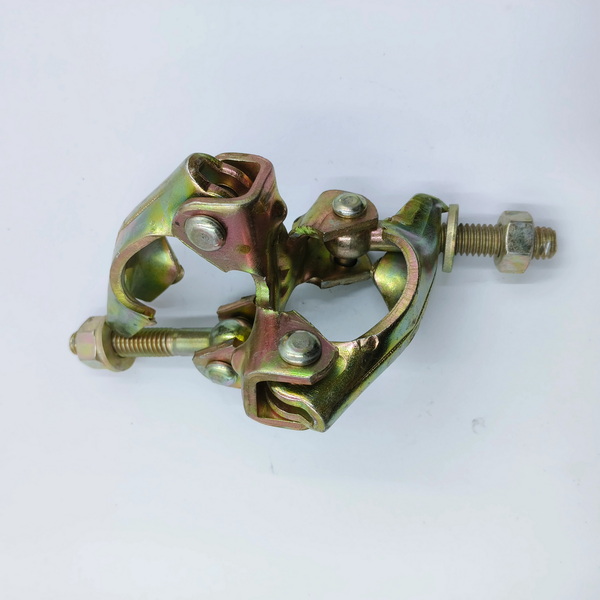
Installation and Safety Guidelines
Installation Steps
1. Preparation: Inspect all couplers for damage or excessive wear. Ensure the zinc coating is intact.
2. Positioning: Place the coupler on the scaffold tubes at the required junction (right angle, end-to-end, etc.).
3. Tightening: Use the appropriate spanner (typically 21-23 mm) to tighten the nuts to manufacturer-recommended torque, ensuring a secure fit.
4. Verification: Check that the tubes do not slip or rotate. For harsh weather, double-check all connections after storms or heavy rainfall.
Safety Best Practices
- Always use couplers that comply with EN74/BS1139 or equivalent standards.
- Regularly inspect all scaffold joints, especially after severe weather events.
- Replace any coupler with signs of corrosion, deformation, or thread damage.
- Store unused couplers in dry, covered areas to prolong their lifespan.
Maintenance and Longevity
Routine Maintenance
- Cleaning: Remove mud, salt, or debris after use, especially in coastal or muddy environments.
- Lubrication: Apply light oil to threads if couplers are exposed to water for extended periods.
- Inspection: Check for loss of zinc coating, especially on edges or threads. Re-galvanize or replace if necessary.
- Storage: Store couplers in containers or covered spaces when not in use. Avoid direct contact with soil or standing water.
Expected Service Life
With proper maintenance, a 48.3 mm galvanized pressed scaffolding coupler can last 5–10 years or more, even in challenging climates. Hot-dip galvanized couplers offer the longest lifespan under harsh conditions.
Advanced Usage and Case Studies
Advanced Usage in Extreme Environments
In oil refineries, offshore rigs, and arctic construction sites, the 48.3 mm galvanized pressed scaffolding coupler is often the preferred choice due to its proven resistance to corrosion and mechanical stress. In these settings, regular maintenance and inspection routines are even more rigorous, and only the highest-quality couplers are used.
Case Study: Coastal Bridge Construction
A major bridge project in a coastal city required scaffolding that could withstand salt spray, high winds, and frequent storms. Engineers specified only hot-dip galvanized 48.3 mm pressed couplers. After three years of continuous exposure, inspections revealed minimal corrosion and no structural failures, validating the choice of coupler and maintenance strategies.
Case Study: Cold Climate High-Rise
A high-rise project in Northern Europe faced months of snow and sub-zero temperatures. The scaffolding, built with 48.3 mm galvanized pressed couplers, remained safe and stable throughout the winter. Regular de-icing and inspection ensured bolt threads stayed functional, and the couplers showed no significant rust by project's end.
Environmental Impact and Sustainability
Recyclability and Environmental Benefits
Steel is one of the most recycled materials in the world, and the 48.3 mm galvanized pressed scaffolding coupler is no exception. At the end of its service life, the coupler can be recycled, reducing environmental impact and supporting sustainable construction practices.
Sustainable Usage Practices
- Reuse: Couplers can be reused across multiple projects, provided they pass inspection.
- Reduced Waste: Proper maintenance extends the lifespan, minimizing the need for frequent replacements.
- Eco-Friendly Coatings: Some manufacturers now use environmentally friendly galvanization processes to further reduce ecological impact.
Conclusion
The 48.3 mm galvanized pressed scaffolding coupler is specifically engineered for resilience in harsh weather conditions. Its robust pressed steel construction, combined with a high-quality galvanized finish, provides excellent resistance to rust, corrosion, and mechanical stress. Whether exposed to rain, snow, salt air, or extreme temperatures, these couplers maintain their structural integrity and safety performance when installed and maintained correctly. For construction professionals seeking reliability and longevity in demanding environments, the 48.3 mm galvanized pressed scaffolding coupler remains an indispensable choice. Regular inspection, proper installation, and adherence to best practices will ensure these couplers deliver maximum safety and value, project after project.
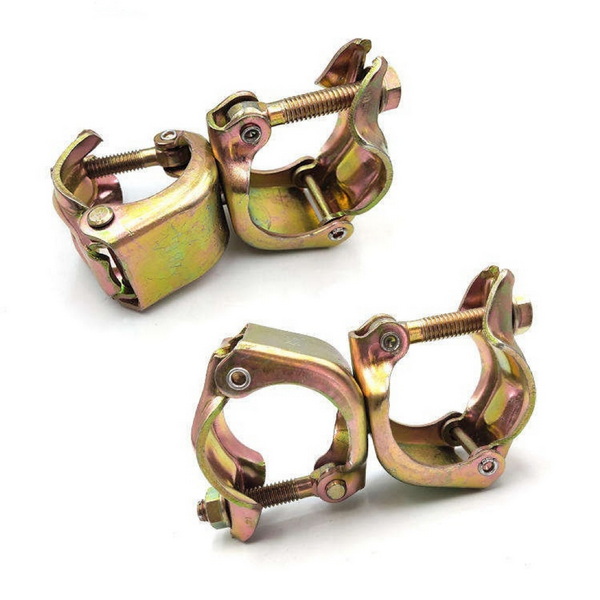
FAQ
1. Can 48.3 mm galvanized pressed scaffolding couplers be used in coastal or marine environments?
Yes, the galvanized zinc coating provides strong protection against salt-induced corrosion, making these couplers suitable for coastal and marine applications. For maximum durability, hot-dip galvanized couplers are recommended in these settings.
2. How often should galvanized pressed couplers be inspected in harsh weather?
Couplers should be inspected before each use and after any severe weather event. Look for signs of corrosion, deformation, or loss of zinc coating, and replace any compromised units promptly.
3. What is the difference between pressed and drop-forged couplers for harsh weather?
Pressed couplers are lighter and easier to handle, while drop-forged couplers offer even higher strength. Both types, when galvanized, are suitable for harsh weather, but drop-forged may be preferred for the heaviest loads or most extreme conditions.
4. Does galvanization wear off over time, and what should I do if it does?
Galvanization can wear off due to abrasion or prolonged exposure. If the zinc layer is visibly damaged or rust appears, replace the coupler or have it professionally re-galvanized to ensure continued protection.
5. Are 48.3 mm galvanized pressed couplers compatible with all scaffold tube brands?
Yes, as long as the tubes are 48.3 mm in diameter and meet relevant standards (EN74/BS1139), the couplers are universally compatible across brands and systems.













